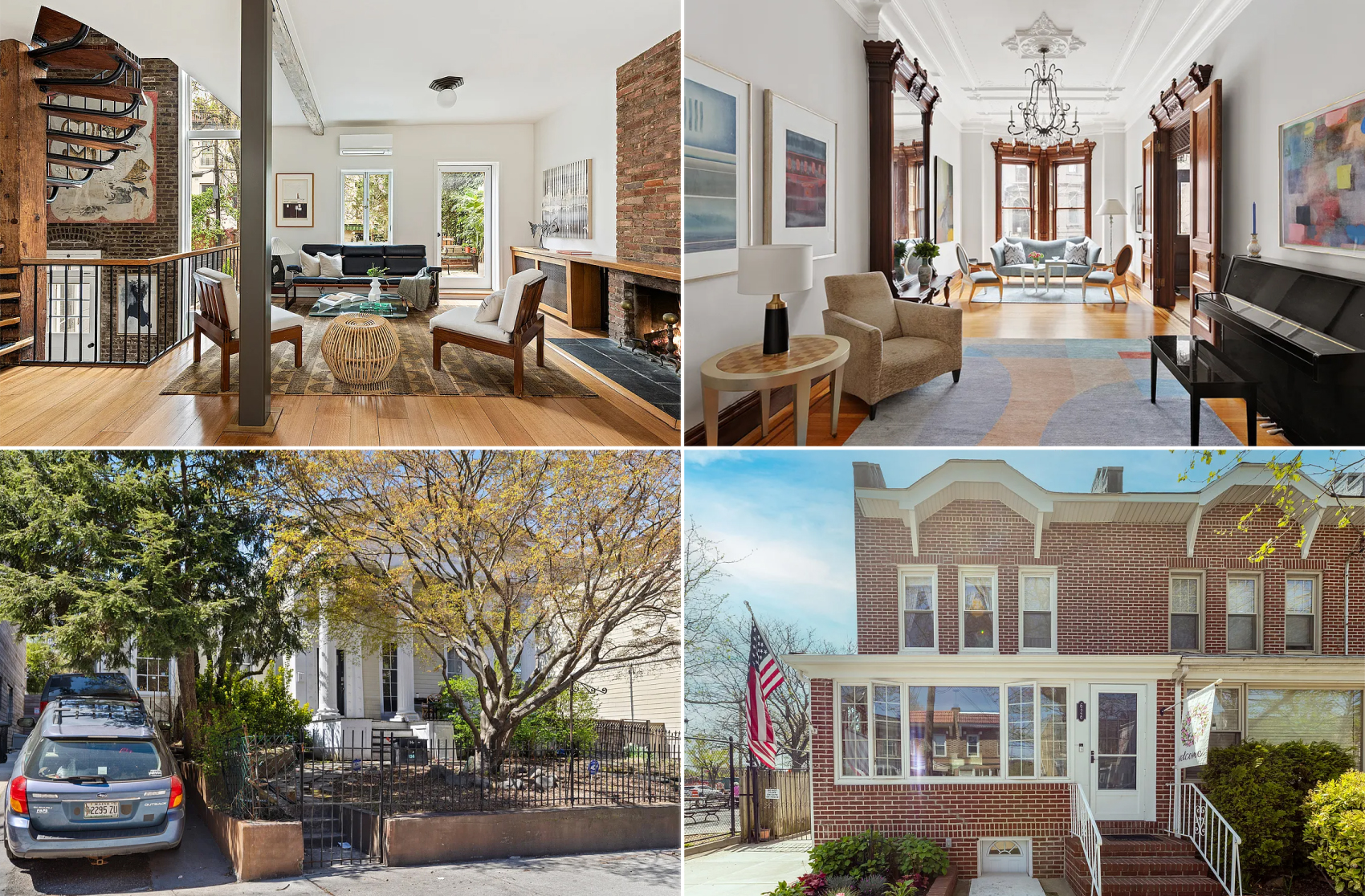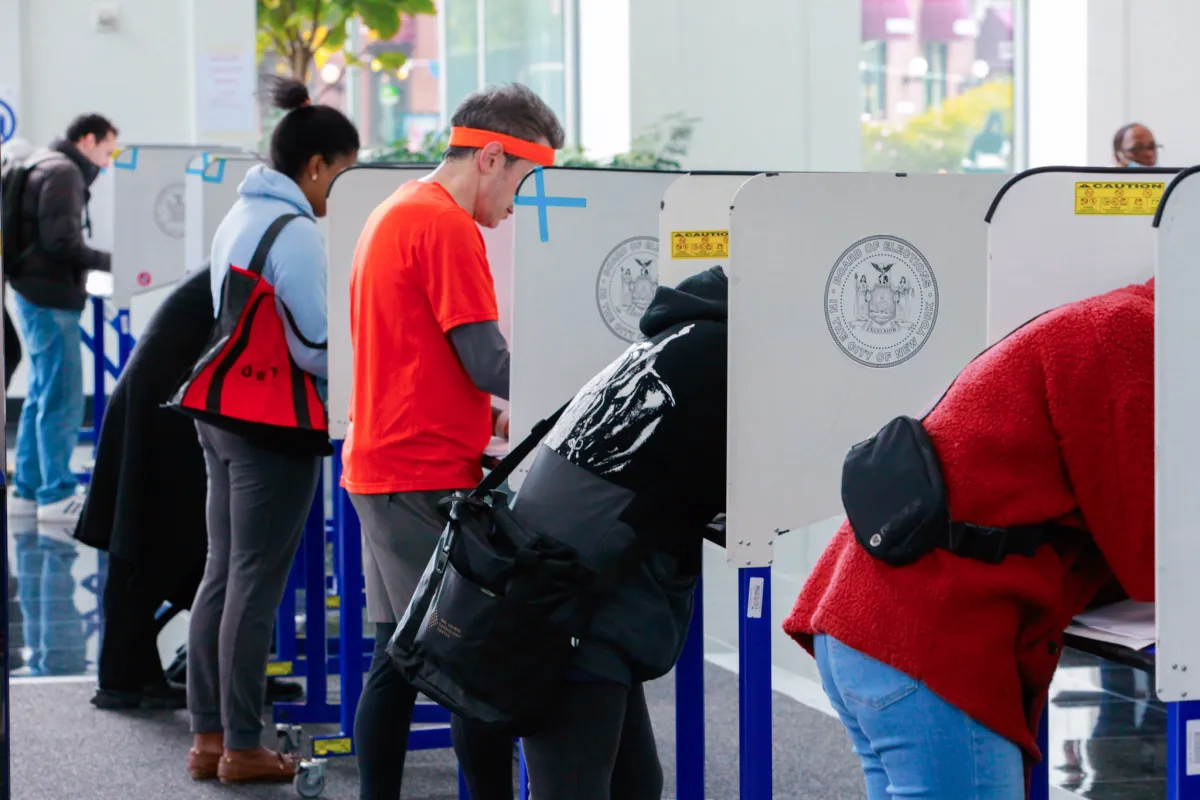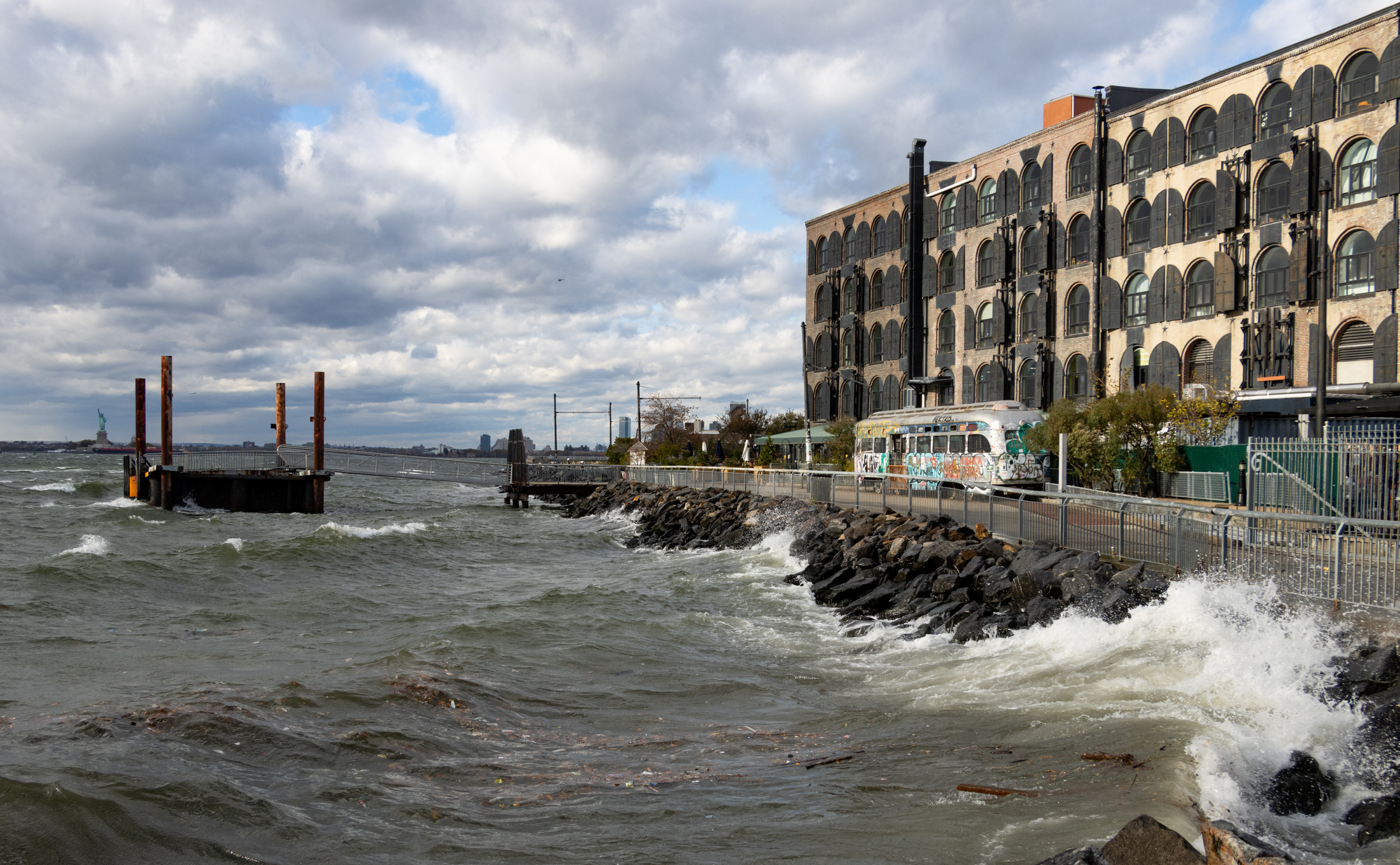Passive House Comes to Brooklyn Heights
[nggallery id=”53667″ template=galleryview] We were invited to tour an in-construction Passive House in Brooklyn Heights, a 1846 brownstone on Sydney Place that was badly remodeled in the 80s and is now receiving a gut renovation to accommodate to the most rigorous energy standard in the world. For details on what a Passive House is, you…
[nggallery id=”53667″ template=galleryview]
We were invited to tour an in-construction Passive House in Brooklyn Heights, a 1846 brownstone on Sydney Place that was badly remodeled in the 80s and is now receiving a gut renovation to accommodate to the most rigorous energy standard in the world. For details on what a Passive House is, you can visit this website or listen to this helpful NPR feature. We can tell you it is a house-wide energy system that uses an incredible amount of insulation and effective, insulated windows to create an airtight building. In this particular home, air source heat pumps bring fresh air into the house, filter the air, and then heat or cool the air which in turn heats or cools the house. (This is 80-90 percent more effective than a traditional heating or cooling system.) The contractor on the site, Sam McAfee, told us that the project is the first landmarked Passive House in the US, and the LPC has worked closely with them, especially with the windows. Through the winter, the home could maintaining 55 degrees without heat. Click through the photos to see how certain features in the home work in the system. Construction should be complete by this April.





NY Passive House has regular meet-ups that include some really fantastic house tours of local PH projects.
Its great for homeowners, engineers, architects and anybody who is interested in Passive House. Whether you’re intrigued or skeptical, its worth checking out…
http://www.meetup.com/NYPassiveHouse/
Hi benson,
Passive House design will also address your cooling bills.
Here’s how:
1) The super insulation works in summer and winter. During the summer, the insulation (and great windows) significantly reduce heat gain, on the order of 80% to 90%. In other words, your air conditioner is doing 10% to 20% as much work (and therefore drawing a proportionate amount less electricity)
2) Passive House energy modeling specifically addresses passive ventilation (during the close-to-ambient in between months where it makes sense) so you are air conditioning less.
3) Passive House energy modeling also specifically addresses orientation and shading – both of which will reduce your cooling loads.
4) Passive House reduces air infiltration and uses Energy Recovery Ventilators so that your fresh air is brought in at close to ambient temperature (so you are cooling, say, 80 degree air down a few degrees rather than cooling 95 degree air).
5) Passive House rewards extremely efficient heat pump air conditioners.
Between the vastly reduced cooling load and the extremely efficient equipment (COP of 2 or 3, SEER of up to 26), you would be looking at drastic cooling savings.
Hope that answers your concern.
Correction:
I realized that my gas bill statement above doesn’t make sense. What I meant to say is that my gas bill for my 1350 square feet apartment is less than the 2400 square feet house, on a prorated basis. In other words, if I cut the gas bill for the 2400 square feet house in half, it would still be far higher than what I am currently paying for a 1350 square feet apartment.
Tybur6;
In your eagerness to promote this concept, you are coming off as shrill. If this technology is truly superior, a little critical questioning is not going to stop the truth from emerging.
Here’s how I look at this, from my POV. I live in 6-year-old condo. It was no LEED-certified, but it is fairly well-insulated. It has Anderson double-paned casement windows: good, but certainly not the best when it comes to weather-tightness.
With this grade of construction, my gas bill (which also includes my hot water-heating and gas dryer) for a 1350 square feet apartment is less than the 1928-built, 2400 square feet row house than I used to own. Indeed, I could shut the heat off for a 1/2 day and not even feel the difference.
My bigger bill, by far, is my electricity bill for my central AC during the summer, and I don’t see how PH addresses this consumption. Ny’s summers are brutal because of the humidity, and an exhanger system does not address it.
So, on first glance, it doesn’t make the case. I see it this way: I would have to pay more for construction that would marginally lower my gas consumption, but does nothing to address the larger issue.
Am I missing something?
In vanessa’s defense:
tybur6 makes the following statemennt:
By tybur6 on February 18, 2011 2:16 PM
“Sorry for the ‘vitriol’ but this uninformed jumping to conclusions makes me angry. Passivhaus is not a secret snake oil, it’s tried-and-true technological approach to heating and cooling. Folks that just say “X is BS” because they are CLUELESS about how something works.
The tides are caused by the moon?! That’s BS. They’re obviously caused by a huge sea monster moving about.
It’s like architectural Tea Party members… moved by gut feelings and not convinced by facts.”
He is angry at the uninformed jumping to conclusions,
then makes a sweeping statment about “Tea Party members”
purporting to know their gut feelings and certain that they are not in full posession of the facts because they disagree with his world view.
Laughable.
*note, I am not a Tea Party member,
and I don’t want to start a political discussion here, especially on the weekend.
I was just enjoying reading through this informative discussion and struck by the hypocrisy.
P.S.
I am more than glad to have the full political discussion/brawl in the OT on Monday. ;o)
Vanessa — I attack you professionalism because you’ve been presenting yourself as a “if it ain’t broke don’t fix it” stick in the mud. By conveniently suggesting it’s not broke, when we all know it is!
You’ve presented yourself as a professional architect that dismisses the positive benefits of *proven* energy efficiency technology. Earlier, passivhaus is just BS. Most recently, NYC is the greenest place on earth, why should we bother improving?
I guess a better way to put it… I’m not attacking your professionalism. I’m sure that’s top notch. I’m attacking your competence.
And by this I mean, if any of the above is an indication, your clients are not receiving information from you to help them make these choices… because you are either unaware of newer technologies (i.e., within the last 15 years) or don’t want to bother because it might take a little more effort.
Haven’t posted in a while, and actually haven’t lurked as much recently either, following a (hopefully temporary) move to DC, but I couldn’t not jump in after all the nastiness in this single thread. The attacks on Vanessa are particularly bad. It is very hard to argue with the Second Law of Thermodynamics, but go ahead if you’d like. I believe her point was more a criticism of the wording of the article, which is a bit deceptive, than with the principles of a highly energy efficient house. But to decide that Vanessa is short on skills and lacking character, and to use gender-based put-downs is entirely abominable. And before the same people who started the ad hominem merry-go-round come after me, yes, I’m an Architect, yes I’ve been practicing successfully for 30 years and yes I’m LEED accredited and work with one of the most innovative firms exploring sustainability, 2030 challenge, carbon neutrality and even regenerative design. There is a lot of room for healthy discussion about ideas such as Passivhaus, but not when it degrades to poo-slinging in the sandbox. Thanks to young archi for providing some adult supervision.
OK, it’s true – I am being intentionally provocative. tybur6, I agree with everything you’ve said in your last post (apart from the unwarranted attack on my professionalism – why do that? what the hell do you know about it?)
and props to young archi for taking the time to try to explain this to a lay audience
I just hope that people think critically about this, and not simply drink the lime green kool-aid
Vanessa,
There is room in our profession for multiple problem-solving approaches and a diversity of opinion.
I happen to agree that the Green movement has a lot of fat to trim – I just don’t think Passive House is that fat.
The facts are that buildings in the US consume 36% of the total energy, and 65% of the total electricity. Passive House aims, and can be successful, and reducing those figures.
As an architect, this may or may not be high on your priority list in the design process. Its obviously best if we all come at similar problems with a different perspective. But energy efficiency has got to be on the list, even as a low priority.
To me, Passive House is just extremely robust energy efficient building science. To say that building science and energy efficiency are ‘hobby horses’ is plainly wrong.
I think there is a seat at the table for Passive House, and its worth understanding the principles, even if your design process ultimately values other criteria.